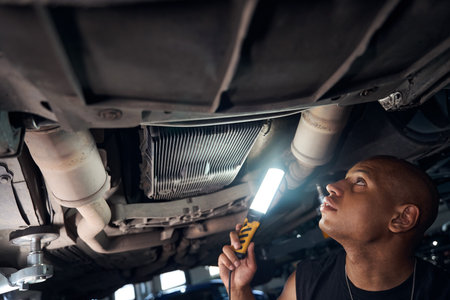1. Introduction: Why Strengthen Your Bottom End?
When increasing boost pressure in a turbocharged or supercharged engine, the bottom end—comprising the crankshaft, connecting rods, pistons, and bearings—must withstand significant stress. If these components aren’t strong enough, you risk catastrophic engine failure. Strengthening your bottom end ensures durability, reliability, and the ability to handle higher horsepower without breaking down.
What Happens When Your Bottom End Isn’t Strong Enough?
Stock bottom-end components are often designed for moderate power levels. When you increase boost, these parts experience higher cylinder pressures and forces that can lead to failure. Below is a comparison of stock and reinforced bottom-end components:
| Component | Stock | Reinforced |
|---|---|---|
| Crankshaft | Cast or weak forged steel | High-strength forged or billet steel |
| Connecting Rods | Powdered metal or weak forged rods | H-beam or I-beam forged rods |
| Pistons | Cast or hypereutectic | Forged aluminum alloy |
| Bearings | Standard bearings | Performance or coated bearings |
How Strengthening Your Bottom End Improves Durability
A reinforced bottom end allows your engine to handle more boost without failure. Stronger materials and advanced designs improve resistance to extreme pressure, heat, and mechanical stress. Here’s how upgrading each component helps:
Stronger Crankshaft
A forged or billet steel crankshaft resists flexing and cracking under high horsepower loads.
Upgraded Connecting Rods
H-beam or I-beam forged rods offer superior strength over stock rods, preventing bending or snapping under high boost.
Forged Pistons
These pistons withstand higher combustion pressures and heat, reducing the risk of cracking or melting.
Performance Bearings
High-performance bearings reduce friction and improve longevity, preventing premature wear under high-stress conditions.
Is Strengthening Your Bottom End Necessary for Every Build?
If you’re only making minor power increases, a stock bottom end may hold up. However, if you plan on significantly increasing boost, reinforcing your bottom end is a must. Ignoring this step can lead to blown engines, costly repairs, and unnecessary downtime.
Next Steps in Building a Bulletproof Bottom End
Now that you understand why reinforcing your bottom end is crucial, the next step is selecting the right components and ensuring they are properly installed. In the following sections, we’ll dive deeper into choosing the best crankshafts, rods, pistons, and bearings for your high-boost setup.
2. Choosing the Right Components
When building a bulletproof bottom end, the key to handling increased power and boost is selecting the right internal components. Stock parts are often not strong enough to withstand the high cylinder pressures that come with forced induction. Upgrading to forged internals ensures reliability and longevity, even under extreme conditions.
Forged Pistons
One of the most critical upgrades is forged pistons. Unlike cast pistons, which can crack or fail under high boost, forged pistons are much stronger and more resistant to heat and pressure. They are typically made from high-strength aluminum alloys and offer better durability for performance applications.
Benefits of Forged Pistons
- Higher resistance to detonation and pre-ignition
- Increased durability under high boost levels
- Better heat dissipation
- Improved strength compared to cast pistons
Upgraded Connecting Rods
The factory connecting rods are often a weak link in high-boost applications. Upgrading to forged connecting rods provides the extra strength needed to handle increased power without bending or breaking.
Comparing Factory vs. Forged Connecting Rods
| Type | Material | Strength | Boost Handling |
|---|---|---|---|
| Stock Rods | Cast or Powdered Metal | Weaker | Limited |
| Forged Rods | 4340 Steel or Billet Aluminum | Much Stronger | Handles High Boost |
Forged Crankshaft
As power levels increase, the stock crankshaft may struggle to maintain reliability. A forged crankshaft offers improved strength and durability, reducing the chances of failure at high RPMs and under extreme loads.
Key Advantages of a Forged Crankshaft
- Better resistance to flex and deformation
- High-strength material for extreme performance
- Enhanced durability at high RPMs
- Reduced risk of crankshaft failure
Incorporating forged pistons, connecting rods, and a crankshaft into your build will provide the reinforcement needed to handle the additional stresses from increased boost. These upgrades are essential for pushing more power while ensuring engine reliability.

3. Block Preparation and Reinforcement
Building a high-boost engine starts with a solid foundation, and that means reinforcing the block to handle the extra stress. Without proper strengthening, the block can flex under high power levels, leading to failure. Here, we’ll cover three key techniques to reinforce your engine block: block sleeving, main studs, and girdles.
Block Sleeving
Block sleeving involves installing stronger cylinder liners into the engine block to handle increased combustion pressure. Aftermarket sleeves, typically made from ductile iron, offer superior strength compared to stock materials and help prevent cylinder wall cracking or distortion.
Benefits of Sleeving:
- Increases cylinder wall strength
- Reduces the risk of warping or cracking under high boost
- Allows for larger bore sizes for more displacement
Main Studs
Main studs replace the stock main bolts, offering better clamping force and reducing main cap movement under high loads. They’re usually made from high-strength alloy steel such as ARP 2000 or Custom Age 625+.
Main Stud vs. Stock Bolt Comparison:
| Feature | Stock Bolts | Main Studs |
|---|---|---|
| Clamping Force | Lower | Higher, reducing cap movement |
| Reusability | Limited (stretched after torqueing) | Reusable multiple times |
| Strength | Weaker material | Forged, high-tensile steel |
Girdles
A girdle is a reinforcement plate that ties the main caps together, adding extra rigidity to reduce movement. This helps stabilize the crankshaft and prevent block flex under extreme boost pressure.
Why Use a Girdle?
- Improves engine block stability
- Reduces stress on the main bearings
- Prevents the main caps from shifting under high load
Final Thoughts
Proper block reinforcement is essential for a bulletproof bottom end. By combining block sleeving, main studs, and a girdle, you can significantly improve your engine’s strength and reliability under high boost conditions. The right reinforcements will help keep your engine together when pushing serious power.
4. Four. Proper Balancing and Assembly
When pushing your engine to handle more boost, proper balancing and assembly are crucial. Every component in the bottom end needs to work together smoothly to avoid excessive vibration, bearing wear, and potential catastrophic failure. Precision machining and correct tolerances ensure your engine runs reliably under high boost conditions.
The Importance of Precision Machining
Precision machining ensures that all engine components fit together perfectly. Crankshafts, connecting rods, and pistons must meet exact specifications to maintain proper clearances and alignment. This reduces stress on internal parts and enhances overall durability.
Key Areas Requiring Precision Machining:
- Crankshaft journals: Must be polished and machined to exact specs for proper bearing operation.
- Decking the block: Ensures gasket sealing surfaces are flat and true.
- Bore and honing cylinders: Provides the correct piston-to-wall clearance for longevity.
- Align honing the main journals: Keeps the crankshaft properly supported and aligned.
Balancing the Rotating Assembly
Balancing the rotating assembly prevents vibrations that can lead to bearing wear and fatigue failure. A well-balanced setup allows your engine to rev higher and handle added stress from boost more efficiently.
Components That Need Proper Balancing:
| Component | Why It’s Important |
|---|---|
| Crankshaft | Ensures smooth rotation and reduces stresses on bearings. |
| Connecting rods | Prevents uneven weight distribution that can cause vibrations. |
| Pistons | Must be weight-matched to avoid imbalances in reciprocating motion. |
| Flywheel | Can amplify vibrations if not balanced correctly, affecting drivability. |
Ensuring Proper Tolerances
Maintaining the correct tolerances ensures that all components fit and function harmoniously. Clearances that are too tight can cause excessive friction and heat buildup, while too loose of tolerances can lead to instability and premature wear.
Critical Tolerances to Check:
- Main bearing clearance: Ensures proper oil flow to protect the crankshaft.
- Rod bearing clearance: Prevents excessive friction while maintaining oil film strength.
- Piston-to-wall clearance: Prevents scuffing and excessive wear under boost.
- Ring gap spacing: Allows for heat expansion without cylinder damage.
By carefully machining, balancing, and assembling your engine to precise tolerances, you can build a stronger bottom end capable of handling high boost levels with reliability.
5. Oil System Upgrades
When increasing boost and power levels, keeping your engine properly lubricated is crucial. Higher horsepower means more stress on engine components, and if your oiling system isnt up to the task, you risk premature wear or even catastrophic failure. Upgrading your oil system ensures your bottom end gets the lubrication it needs to stay strong.
High-Flow Oil Pumps
A high-flow oil pump is one of the best upgrades you can make when reinforcing your engine. Factory oil pumps are designed for stock power levels, and once you crank up the boost, they may struggle to supply enough oil to crucial engine components. A high-flow oil pump ensures adequate oil pressure and volume, reducing the risk of oil starvation during high-RPM operation.
Upgraded Bearings
Bearings play a crucial role in maintaining smooth engine operation, but with increased power and load, factory bearings may not hold up. Performance bearings are designed to handle greater pressures and offer better heat dissipation, reducing the chances of oil breakdown or bearing failure. Consider bearings made from high-quality materials with extra coatings for improved durability.
Baffled Oil Pans
Under hard acceleration, aggressive cornering, or high-RPM pulls, oil can slosh away from the pickup, leading to dangerous oil starvation. A baffled oil pan includes trap doors and partitions that keep oil around the pickup, ensuring consistent lubrication even in extreme conditions. Performance cars and track-driven vehicles greatly benefit from this upgrade.
Comparison of Oil System Upgrades
| Upgrade | Benefit | Why It’s Important |
|---|---|---|
| High-Flow Oil Pump | Increases oil pressure and flow | Prevents oil starvation, ensuring critical components receive oil |
| Upgraded Bearings | Handles higher loads and reduces friction | Improves engine longevity under high boost |
| Baffled Oil Pan | Minimizes oil sloshing | Maintains consistent oil supply, reducing risk of failure |
Final Thoughts on Oil System Upgrades
Strengthening your engines bottom end isnt just about reinforcing pistons and rods—it also means ensuring that all moving parts are getting proper lubrication. A high-performing oil system will keep your engine running smoothly, whether youre pushing more boost on the street or hitting high RPMs at the track.
6. Final Thoughts: Tuning and Maintenance
Once youve built a strong bottom end, proper tuning and maintenance are essential to ensuring long-term reliability and performance. Even the toughest forged internals wont last if your engine isnt tuned correctly or neglected in daily use. Lets go over some key practices to keep your high-performance engine running smoothly.
Proper Tuning for Maximum Reliability
Tuning isnt just about making power—its about ensuring that your engine is running safely under all conditions. A good tune will prevent issues like pre-detonation, excessive heat, and poor fuel mixtures, all of which can destroy an engine. Make sure to work with an experienced tuner who understands forced induction and your specific setup.
Key Aspects of a Proper Tune
| Aspect | Why It Matters |
|---|---|
| Air/Fuel Ratio | Ensures the engine receives the right fuel mixture for power and safety. |
| Ignition Timing | Prevents detonation and keeps combustion efficient. |
| Boost Levels | Regulated boost prevents excessive stress on the bottom end. |
| Fuel Delivery | Avoids leaning out under high load, which can cause catastrophic failure. |
| Temperature Management | Proper cooling strategy prevents overheating and engine damage. |
Break-In Procedures: Do It Right
After assembling your bottom end, a proper break-in process is crucial. Piston rings need time to seat properly against the cylinder walls, and bearings need to bed in to prevent premature wear. Skipping or rushing this step can lead to oil consumption issues, poor compression, or even early failure.
Basic Break-In Guidelines
- Avoid high RPMs and full boost for the first 500–1,000 miles.
- Use a break-in oil with high zinc content, then switch to your preferred performance oil.
- Vary engine load—dont just cruise at a constant speed.
- Perform an early oil change (usually after the first 100–200 miles).
Routine Maintenance for Longevity
Once your engine is fully broken in and properly tuned, ongoing maintenance ensures it stays performing at its best. High-performance builds require more frequent checks and service compared to a stock engine.
Essential Maintenance Schedule
| Task | Frequency |
|---|---|
| Oil and filter change | Every 3,000–5,000 miles (or sooner with heavy use) |
| Inspect spark plugs | Every 5,000–10,000 miles |
| Check coolant system | Every 5,000 miles |
| Monitor boost levels | Regularly |
| Compression test | Every 10,000–20,000 miles |
Final Word: Treat Your Engine Well
Building a bulletproof bottom end is only half the battle—how you tune and maintain the engine determines its lifespan and reliability. Regular upkeep, responsible tuning, and proper break-in procedures will go a long way in ensuring that your high-boost setup remains strong for years to come.


